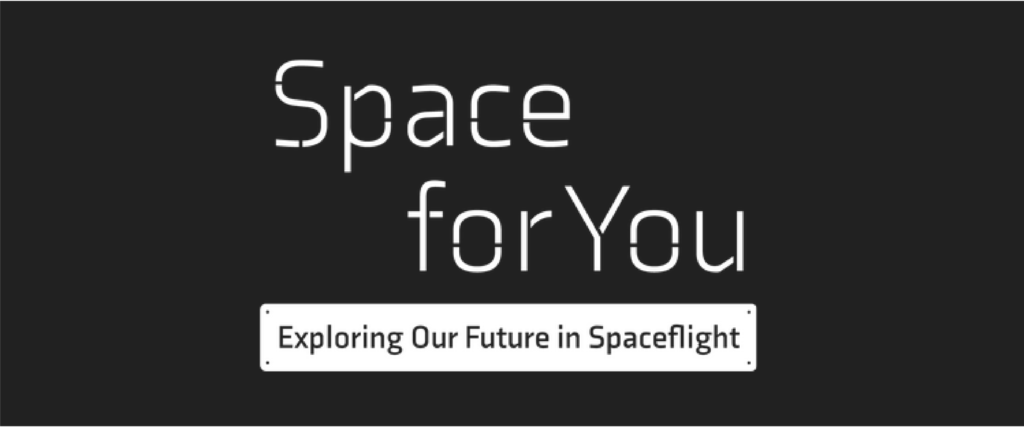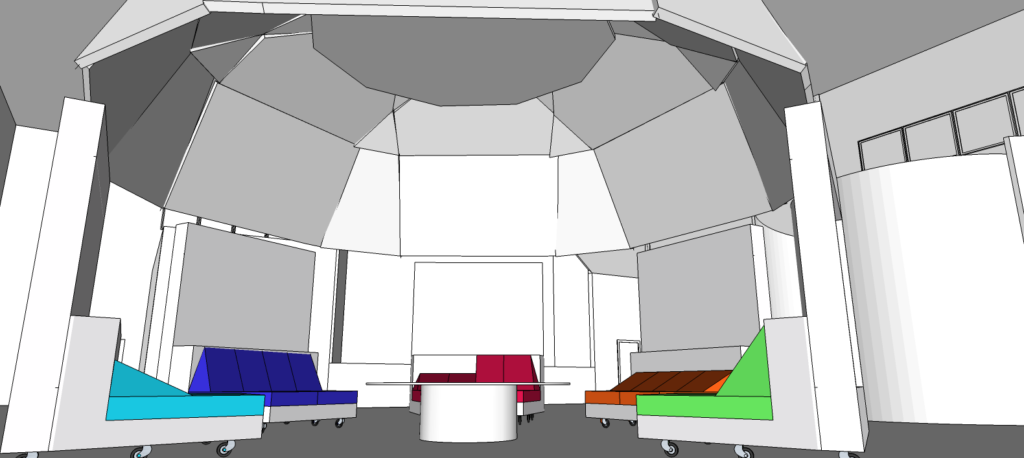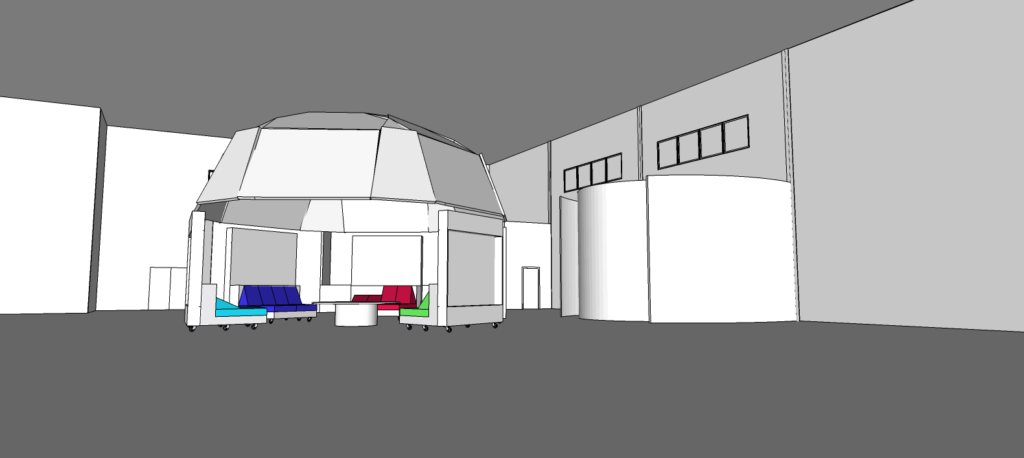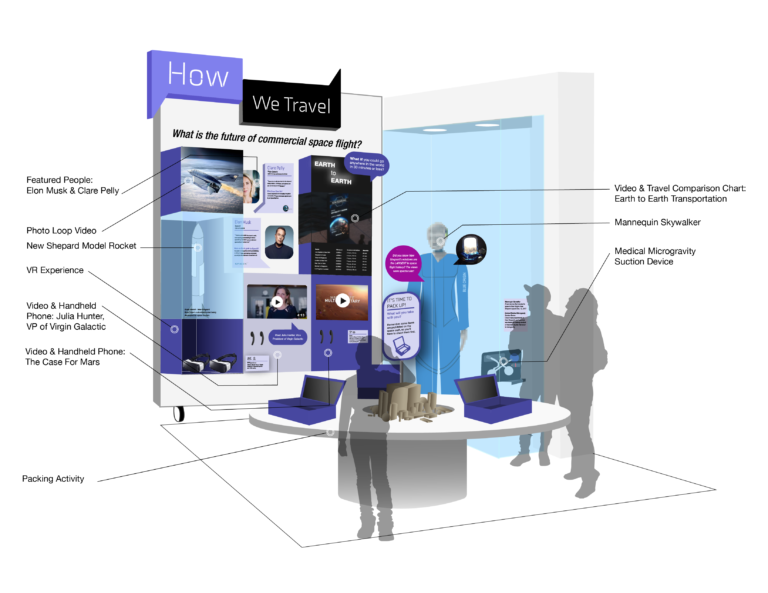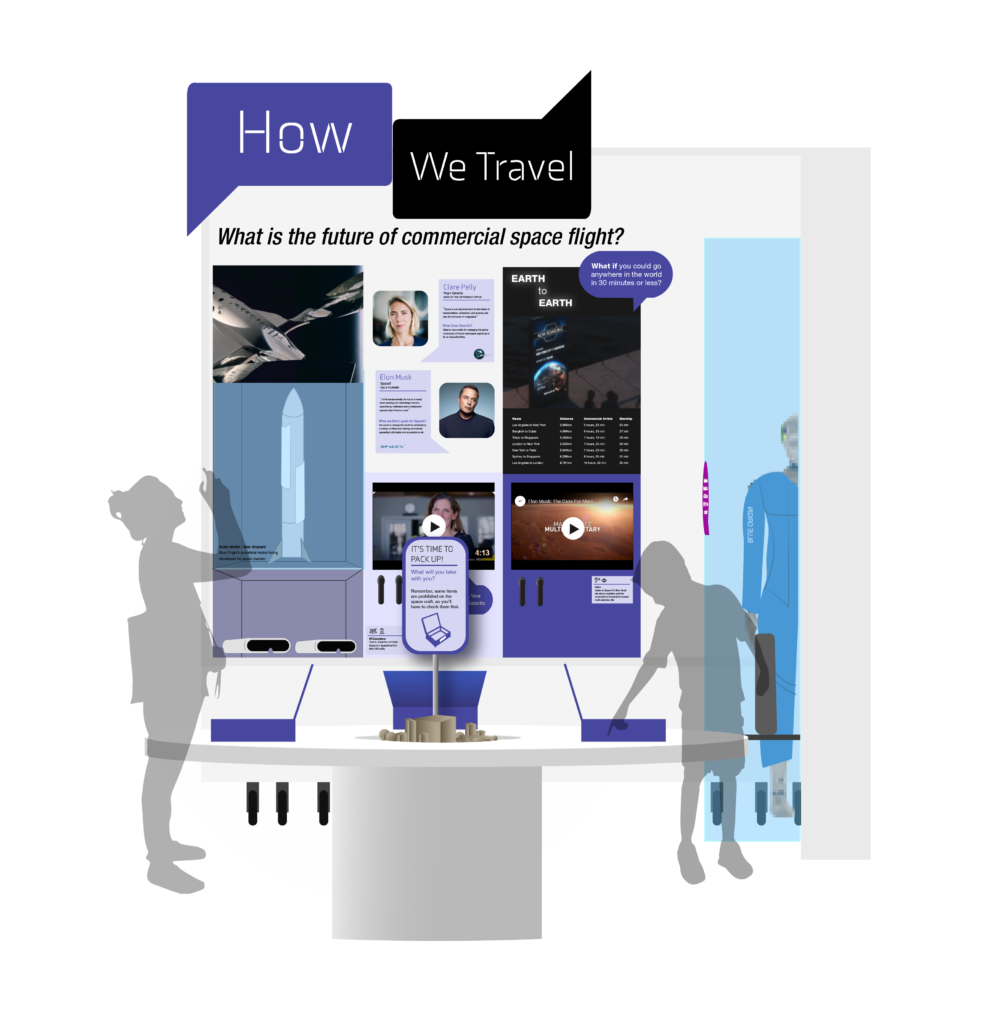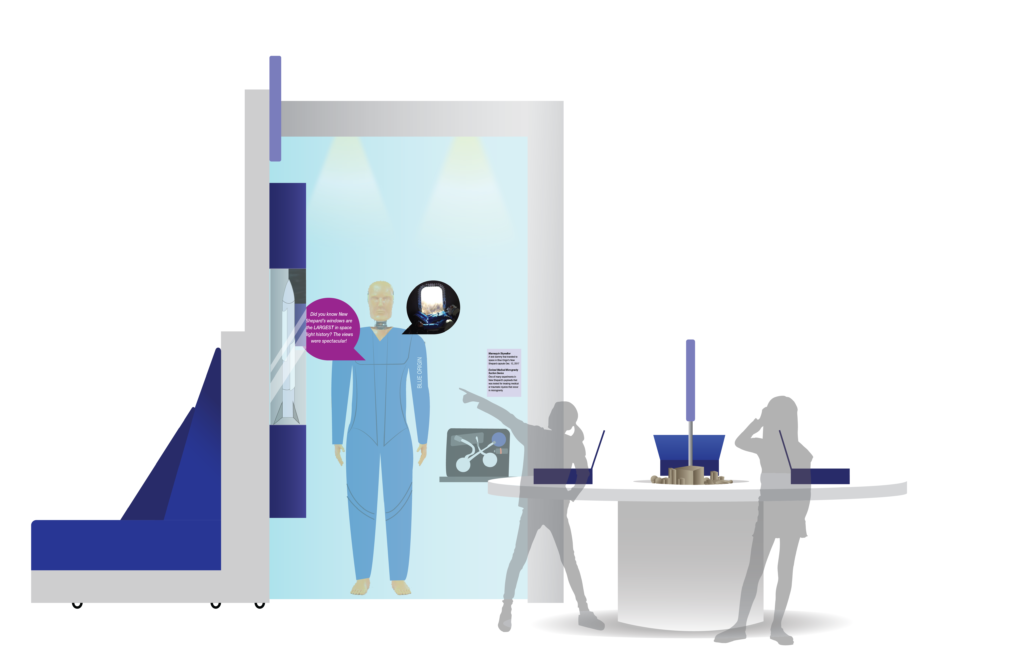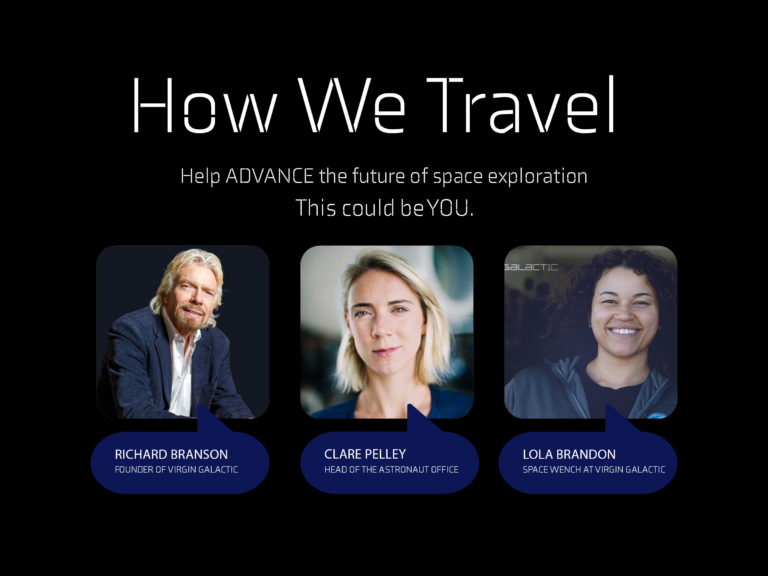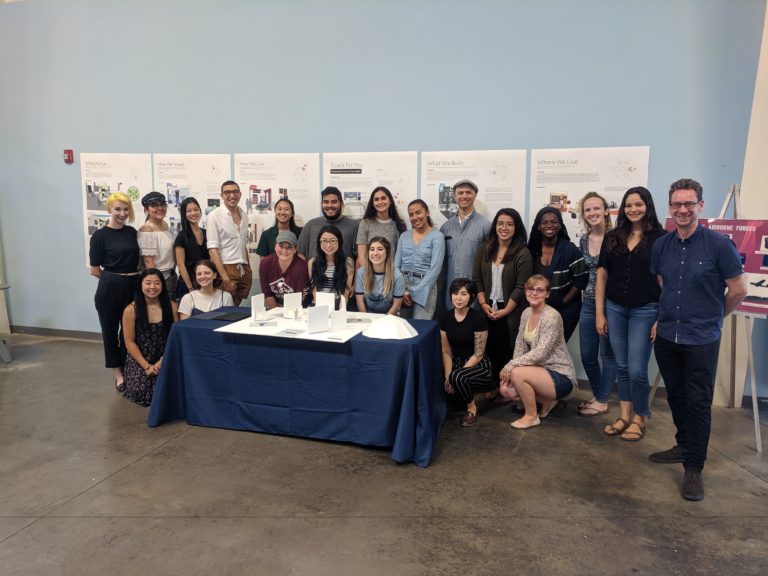DESIGN SOLUTION
Based on site analysis and client input, the team created a circular area comprised of modular wall units, each one of five key stations: What we Eat, How we Travel, What we Build, How we Live, and Where we Live. These stations each address areas in which emerging technology is being imagined, prototyped, or adapted for space. Further, they feature a diverse cast of role models who have careers in the space industry. A geometric dome hangs above the central learning space, and serves as a canvas for video projection. Displays can be easily updated as the museum sees fit. Like the station names, exhibit content uses the fundamental 6W’s to prompt young audiences to respond by asking their own questions as they discover what opportunities and challenges spaceflight holds.
My Role: Member of the How We Travel Team
PROJECT INTENT
The How We Travel section of Space for All aims to introduce 5th graders, the target audience, to commercial spaceflight as part of our not-so-distant future, and the men and women working in the emerging industry. It emphasizes preparation for travel, a familiar concept for people of all ages, but places it in a context most have never encountered: outer space. They will see what new considerations arise when travel is taken outside of Earth’s atmosphere.
